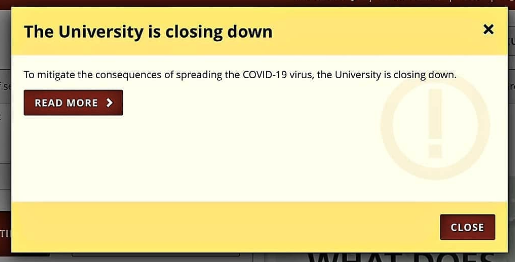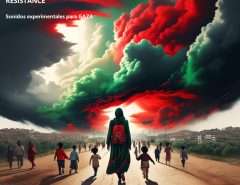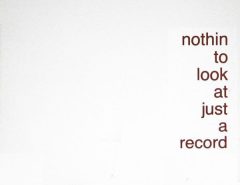Os re-posteo este artículo firmado por Holger Schulze. Que disfrutéis:
SENSOLOGIES OF CONTACT RESTRICTIONS
During this spring’s pandemic, a plentiful of artistic and research activities around sound and sensory studies were started by various researchers and artists: the relation of sound and music to the (mostly urban) environment seemed, apparently, especially intriguing to investigate in these weeks and months of contact restrictions in most and of lockdowns in some regions. Recently, Meri Kytö began collecting those projects. By now, May 27th of 2020, 55 items can be found in her list called »Pandemic+sound/music+environment«. In this list you can find more traditional soundmapping projects from a lot of nations and world regions, but also newspaper articles, blog posts, and scientific surveys focusing on the assumed transformations in the soundscape or the whole ecosystem, even viral videos and videostreams that document and archive the activities of sounding out, playing, singing, musicking in times of the pandemic.
To discuss the various aspects of these pandemic sensibilities (or »pandemisk sanselighed«, Anette Vandsø) we met in our regular Colloquium Sound & Senses. We were nine researchers and artists who scrutinized the various »frames, scales and categories« (Melissa van Drie) we could detect in this archive of projects exploring the sensory generativity of contact restrictions.
NEW PANDEMIC LISTENING PROTOCOLS
Our discussion started out with confessing a confusion: is it really a good thing – as many people assume – that public places seem to have gone silent or at least quiet these days, Merio Kytö asked herself and all of us? Maybe, Melissa van Drie added, it is more the case that our listening protocols (following Voegelin) are almost necessarily altered due to the contact restrictions? Van Drie stressed for instance the activity of listening behind oneself as a phenomenon of developing different habits and customs of listening when walking through a quieter and calmer urban environment. Aside from developing such new protocols also existing protocols seem to be reactivated and revitalized: for instance the old and fascinating idea of mediated telepresence – a strong attractor of media arts in the 1990s and 2000s – has now become an everyday practice and necessity. Up to the point where the decision to listen to the soundscape of a holiday region one wanted to visit can seem now, as Macon Holt pointed out, as a viable and handy alternative: he and his partner intended to visit Fukushima in April 2020 – which they now actually visited sonically, at least punctually, through soundscape recordings.
SONIC PERSONAE IN VIDEOCALLS
Related to the transformations through everyday auditory telepresence are then of course all the domestic soundscapes that everyone of us suddenly grants access to others joining in a videocall: Anette Vandsø pointed out that not only the visual self-presentation is different in videocalls, but also the auditory self-presentation, especially through all the non-intended sound sources maybe entering a job-related conversation – such as playing kids, cooking sounds, quarrels between siblings, chirping birds or activities of any dogs or cats present. The usual visual self-presentation in the public sphere is now almost coercively combined with an often involuntarily audible self-presentation that also manifests a conflict of social roles – or, ideally, a new amalgamation of those roles. What new sonic personae are emerging or developing here, I need to ask?
However, the options for listening to an environment or for strictly separating social roles point to one underlying, structural force in all these mapping activities of sensorial transformations: they rely on and are heavily driven by social stratification. This »partage du sensible« (Rancière), the distribution of sensibilities is a social effect. Social class and gender roles at least provide the economic and chronotopic dispositives for one’s options of listening to or sensing into the sonic effects of recent epidemiological recommendations for social interactions. People whose job-related activities are being considered essential (a noteworthy descriptor, as it is most often related to a lower or even the lowest range of salaries) will probably have a harder time scrutinizing sensorial transformations as their workload on every single day is either massively multiplied or even dropped radically to zero. Both developments tend to deplete a person of its energy to more freely explore and assess certain seemingly more marginal effects in their lives. The sometimes claimed slowdown of these days can definitely not be experienced by people with kids or working in one or more jobs, maybe with a necessitiy for stressful commuting. The so-called quietude of the pandemic presents itself here more often as a sort of vexatious hum if not overload of the pandemic.
ALTERED STATES OF EVERYDAY LIFE
So, should we instead consider these transformations of our social encounters not as a form of welcome (and somewhat decadent if not cynical) break – but more as a kind of syncopy, a stumble as Lars Graugaard called it: maybe these days need to be considered as a kind of, well, Freudian stumble (not a slip) of accelerated societies? The ongoing stream of meme music, for instance produced out of all the balcony concerts, home performances and superstar medleys in videoconferencing rectangles, surely can be regarded in this way, as Macon Holt and Meri Kytö pointed out: it is indeed that these circulating activities gained traction and even political resonance just because they were mediated, recorded, edited and memefied. When focusing in videos posted online – be they memes or videos leaked from a family group chat – one begins to wonder: what are the moments or rituals of singing or sounding out during the pandemic that are not videoed posted public? Emphasizing and accelerating the distribution of some of them is for sure highly selective. Which desire drives the protagonists of these memes to present themselves in these ways and what desire drives powerful distributors to accelerate the distribution of a particular sets of memes?
After almost three months, a quarter of a year, there is now a particular time structure firmly imprinted onto these weeks of contact restrictions and lockdowns: the excitement for new self-presentations, new memes, and altered states of everyday life soon degraded into a depression, and maybe has now reached the laconic and largely uninteresting boredom of the common and the habitual? Is there still a sort of resistance in these new sensibilities to be found, as Lars Graugaard insisted in our conversation? Will we indeed be able to maintain some of the transformations we consider important, for instance different ways of working from home and of arranging a sonic environment through streamed performances as Carla Maier reported? Will these new modes of listening of spring 2020, these emerging new listening protocols just vanish – or will they stick with us and live on with us?
OPTIMIZING + STABILIZING = REASSURING?
After our discussion it seems to me that there are mainly three categories of how these coercively transformed sensibilities are being assessed, employed, or translated into various activities:
The first category is a paedagogical one that sees in these contact restrictions and their effects on social interactions a welcome occasion for personal optimization – be it in the personal lifestyle, the individual working style, styles of recreation, and even in regard to acquiring and training new work skills including digital media. Now seems the time, for many of us, to finally strive for the ultimate optimizing challenge.
This leads me to the second category, which is a psychological one: the ongoing stream of diaries, daily protocols, videos, podcasts, series of memes and tweets seems to represent for many of their authors and producers an apt coping stratgy of materializing and thus stabilizing the vibrant flux of daily, hourly, instantly observations, experiences, doubts and fears, hopes and pleasures these days: to keep track of everything serves a persona precisely this stabilizing function.
The third and last category I recognize here is political. Any person who experiences these weeks as states of emergency and reaches out for stabilizing coping mechanisms is obivously an object to contemporary political reflections: what is needed to achieve practices of successful governance in such a state in flux? It seems to me that the most recent races towards a state that is sometimes being called Back to Normal! or Opening Up [insert nation name] Again! result as direct additions of the tendency to optimizing plus the tendency to stabilizing.
In addition they produce new sensologies of reassuring their consumer citizens. They are sensologies (following Mario Perniola), because they embody governing regimes through sensory or sonic practices that result from the contact restrictions or that are fostered by or forced onto the epidemological recommendations of contact restrictions. This desire to provide reassurance for all citizens affected from the pandemic extends then of course to all the existing habits, values, structures, power regimes and systems of exploitation and oppression. Bluntly said: the state of emergency produces politically an overly stabilizing, optimizing and reassuring governance. And this tendency towards reassurance can then even go far beyond any of the usual affirmations of existing policies. It maybe even intensify and fortify all of the existing demarcations and power relations: the racism, the sexism, the nationalism, the social inequality, the excessive wealth and the poverty – but maybe it intensifies also some of the political decisions for more planetary connectivity, commerce, much tighter synchronized research, development, sales and consumption. In recent days we can even see substantial protest bringing millions of people on the streets, all over this planet in advance of social and democratic change under the sign of #BLACKLIVESMATTER. It is yet to be seen, if these protests can be punchy enough to pressurize the reactionary powers that be, in many nationstates, into lasting and antiracist policies. Such prognostics, however, can only be speculations at this point, educated ones, hopefully.
Whilst underneath all of our optimizing, stabilizing and reassuring (or even rebellious) activities on every single day, the intimidating hum of the pandemic is still and incessantly tangible. Where all of this might lead us, into what detour or to which anxiously seeked for homeground, is yet undefined.
(Participants of this colloquium were: Anette Vandsø, Carla Jana Maier, Jacob Eriksen, Jenny Gräf Shepard, Lars Graugaard, Macon Holt, Melissa van Drie, Meri Kytö & Holger Schulze)





Leave a Reply
Lo siento, debes estar conectado para publicar un comentario.